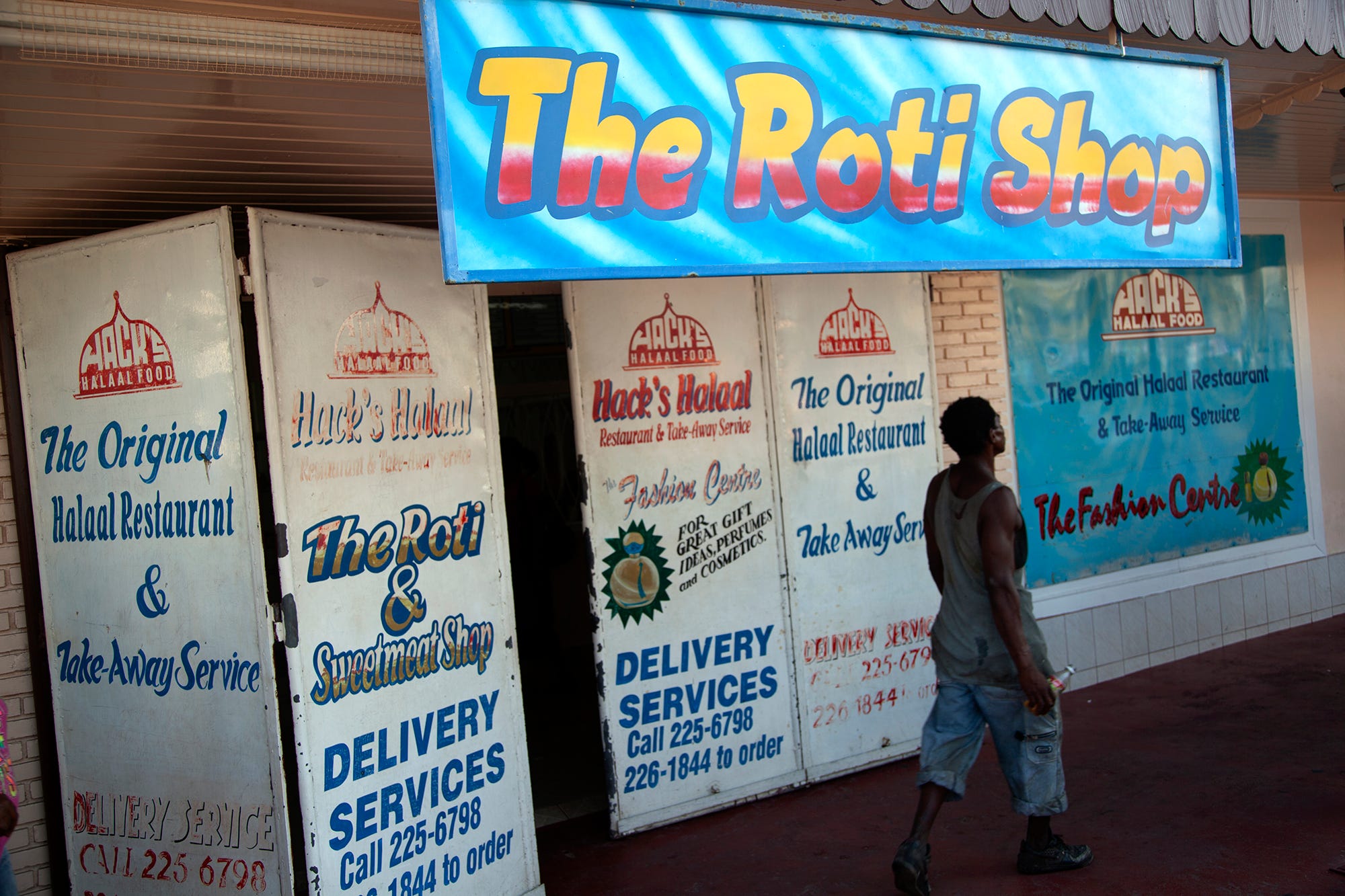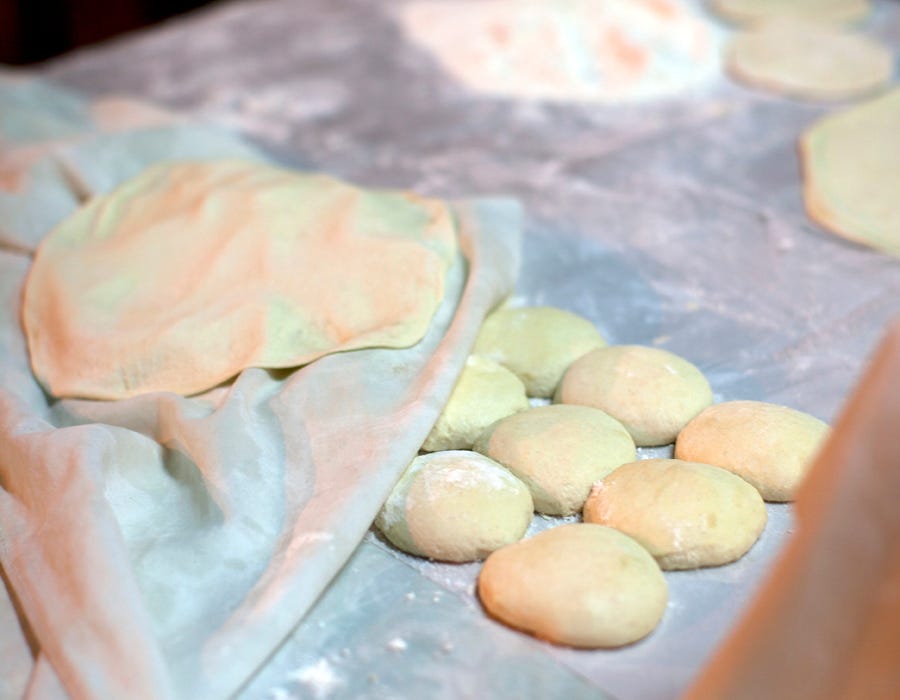How the Guyanese Make Roti
A South American adaptation of a recipe from the Indian Subcontinent.
In Guyana, it’s not that the ingredients of the roti are any different from the typical paratha roti on the Indian sub-continent, though here they usually call it oil roti. There’s flower, baking powder, salt and a little bit of fat. Everything is incorporated in much the same way. The ingredients are mixed and left to rest, then kneaded, rolled, spiraled and then flattened. It’s the same as roti canai in Malaysia or roti prata in Singapore I’m told. What happens in Guyana that makes the roti different from anywhere else is after it is removed from the heat.
Guyanese roti is usually cooked on a tawha, a round pan, a bit like a comal, but with a convex surface.
“Once bubbles start forming, it's an indication to flip it on the other side,” says Clinton Urling, who owns the restaurant German’s Soup, which opened in Georgetown in 1960, and added a location in Brooklyn, New York in 2018. “More oil or ghee is applied during the skillet process. Once finished cooking on both sides, the roti is "clapped" by hands immediately after being taken off the tawah.”
When he says clapped, it is exactly as it sounds. Two hands repeatedly coming together with the still steaming roti in between, which softens the sound that the act is named after. The clapping releases air pockets within the flatbread, creating additional layers within. It makes the roti fluffier and flakier, though not necessarily prettier. It can look pretty beat up at times, depending on whose hands are doing the clapping. Yet it’s more pliable, easier to tear off a piece and scoop up dhal or curry. What it is eaten with changes with the landscape. In Georgetown, it’s eaten with or filled with curries and there’s usually a side of pickled mango or chutney. In the Rupununi, closer to the Amazon, game meats and stews are typical, while in the Essequibo region, seafood is more common.
It’s a funny country, Guyana. It seems completely out of place from the rest of South America. Walking around Georgetown you’ll find hindu temples and mosques every few blocks, then suddenly you are faced with the Victorian clock tower on top of Stabroek Market. Go deeper in the interior and you’ll find indigenous communities singing songs in English. Even the tucupi, the fermented cassava extract made in many parts of the Amazon, is wildly different there.
Roti, as well as the tawa, arrived in the country, when it was known as British Guiana, with indentured workers from India that arrived in the Caribbean in the 19th century after the abolition of slavery. More than 200,000 arrived, mostly from northern Indian states of Uttar Pradesh, Jharkhand and Bihar. Their foods – as was the case with the African, Chinese and Portuguese that came to the country through immigration – were absorbed into Guyanese cuisine. Roti is quite common in the southern Caribbean now, including in Jamaica and Suriname. In Trinidad, it is sometimes made in a similar way as Guyana, where there’s a version called buss-up-shot, which involves the roti being shredded with a dabla, a wooden spatula, just before it’s finished cooking.
There’s no exact date when the clapping began with Guyanese roti, or any indication of who started it, though there are theories. It's common for many home cooks achieve a similar result as clapping by placing the roti in a container or tupperware and shaking it forcefully instead. This prevents your hands from feeling the heat. Urling says that in restaurant settings using buckets to put the roti in to shake it up as opposed to clapping is more common now.
“The clapping has to have been started as an act of convenience and limited access to other resources, like enclosed buckets or containers, for those immigrants who started making oil rotis in Guyana,” says Urling. “The convenience of taking it off the skillet and applying hands while still hot somehow caught on and became a tradition that is still practiced extensively in Guyana today despite access to more resources.”
Keep reading with a 7-day free trial
Subscribe to New Worlder to keep reading this post and get 7 days of free access to the full post archives.



